How to Proceed Investment Decision Process:
The investment decision process mainly depends upon fundamental analysis where lot of information shall be collected about the past performance of the economy, industries, and companies to forecast future performance of economy, industries, and companies to evaluate before taking the investment decision.
This “investment decision process” analysis is systematic and purely logical. It is used to estimate share price and future dividends. Historical and present data are analyzed with the goal to make financial forecasting. By examining related economic, financial data, qualitative and quantitative factors, this “investment decision process” analysis method of evaluation attempt to measure the intrinsic value of a security. This “investment decision process” analysis method attempts to examine in-depth and all-around every single factor such as particular individual company’s factors, micro or macro-economic factors which might affect the value or future prices of security and market developments.
Fundamental analysis of “investment decision process” can be composed of many different aspects:
- The analysis of the economy as the whole
- The analysis of an industry
- The analysis of an individual company
Economy Analysis:
As discovered throughout study, Pakistan’s business sector has many threats as well as opportunities. The hostility in the region is perhaps the greatest threat to both the citizens of Pakistan and their ability to conduct business. However, if Pakistani officials are able to reign in the warring factions, make peace with their neighbors, and enhance their political standing, there are a great many business opportunities to be had. Through enhancing their education systems they can increase literacy rates, attracting foreign businesses looking to expand in the emerging markets of Pakistan. .Education has to be given the utmost priority in order enhance business opportunities in Pakistan.
Pakistan is a developing agricultural country, Nominal GDP of Pakistan in 2019 is $284.214 billion and purchasing power parity is $1.191 trillion, which ranks Pakistan as 42nd and 23rd in world respectively. In 2019, Pakistan is 5th largest country in term of population, and have over 220 million, which is 2.84% of world population. Pakistan nominal GDP per capita is $1,388 which ranks 151th in the world and purchasing power parity GDP per capita is $5,872 which ranks 132nd in the world. The contribution of GDP by sector is, agriculture 18.5%, industry 20.3% and services 61.2%.
As many countries and businesses are suffering economically, they are looking for ways to enhance productivity while cutting costs. However, looking at Pakistan’s current situation and their ability for growth, the country remains an attractive location for business ventures. In Pakistan we discovered a nation that presents significant risks to do business while also providing the opportunity for considerable rewards.
Industry Analysis:
Pakistan is the 4th largest cotton producer with 3rd largest spinning capacity and 8th largest exporter of textile commodities in Asia, which contribute 8.5% in GDP of Pakistan. Textile industry is the most essential manufacturing sector of Pakistan. as it serves as the backbone of Pakistan’s economy. It has the longest production chain, with inherent potential for value addition at each stage of processing, from cotton to ginning, spinning, fabric, dyeing and finishing, made-ups and garments. Critical success factors of the textile industry are availability of cheap and subsidized credit facilities, uninterrupted supply of gas and electricity at low rates, consistent and industry friendly tax policies and establishment of new textile units in less developed areas by giving incentives to the investors i.e. tax holiday. Due to unavailability of these factors, negligible growth of 0.5 percent has been recorded in the current financial year 2014-15 as compared to the last year in Pakistan.
Government of Pakistan has promulgated Textile Policy 2014-19 to ensure the maintenance of country’s reputation as a reliable source of high quality textile goods. Salient features of the Policy are as follows:
- Draw-back for local taxes and levies are given to exporters of textile products on FOB values of their enhanced exports if increased beyond 10% over last year’s exports at the following rates:
- Garments 4%
- Made ups 2%
- Processed fabric 1%
- Markup rate for Export Refinance Scheme of State Bank of Pakistan was reduced from 9.40% to 7.50% under the policy. This rate has been subsequently reduced further to 4.50%.
- Markup rates for Long Term Financing Facility (LTFF) provided to textile manufacturers in the value added sector was reduced from 10.90% to 9.00 %. This rate has been subsequently reduced further to 6.00 %.
The textile industry is often considered the backbone of the Islamic Republic of Pakistan’s economy. When Pakistan came into being there was only 16 textile mills out of which only 12were in operation. Nowadays there are 596-textile mills out of which 442 are in operation.
Some important facts about the textile industry of Pakistan:
- Pakistan’s Textile Industry had proved its strength in global market during the last four decades.
- The availability of cheap labor and basic raw cotton as raw material for textile industry has played the principal role in the growth of the Cotton Textile Industry in Pakistan.
- The textile industry contributes approximately 46 percent to the total output or 8.5 percent of the country GDP.
- Pakistan’s textile Industry is the fourth Largest Cotton Producer.
- 6th largest importer of raw cotton.
- The Third largest Consumer of raw cotton.
- In Asia, Pakistan is the 8th largest exporter of textile products.
- Pakistan is the 3rd largest exporter of raw cotton.
- It provides employment to 38% of the country workforce.
- The Textile and Clothing Industry has been the main driver of the economy for the last 50 years in terms of foreign currency earnings and jobs creation.
Company Analysis:
Nishat Mills Limited (“the Company”) is the most modern and largest vertically integrated textile Company in Pakistan. The Company commenced its business as a partnership firm in 1951 and was incorporated as a private limited Company in 1959. Later it was listed on the Karachi, Lahore and Islamabad Stock Exchanges on 27 November 1961, 11 March 1989 and 10 August 1992 respectively. The Company’s production facilities comprise of spinning, weaving, printing, dyeing, home textile and garment stitching and power generation. Overall, the Company has 32 manufacturing units each specializing in a specific product range located in Faisalabad, Sheikhupura, Ferozewatwan and Lahore.
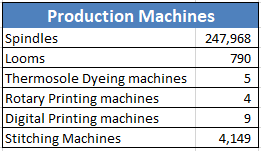
The total revenue for the year 2019 was 96 billion. Due to the application of prudent management policies, consolidation of operations, a strong balance sheet and an effective marketing strategy, the growth trend is expected to continue in the years to come. The Company’s production facilities comprise of spinning, weaving, processing, stitching and power generation. A major portion of the Company’s earnings is export based. Over the years, the Company has achieved significant geographical diversification in its export sales mix.
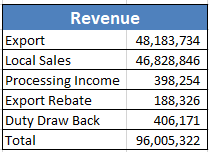
Overall, the NML has 32 manufacturing units each specializing in a specific product range located in Faisalabad, Sheikhupura, Ferozewatwan, and Lahore. A major portion of the NML’s earnings is export based. Over the years, the NML has achieved significant geographical diversification in its export sales mix.
Last Year’s Dividend of NML
Nishat Mills limited has proposed of a cash dividend for the year ended 30 Jun 2019 of Rs.4 per Share which is proportionate to 40%.
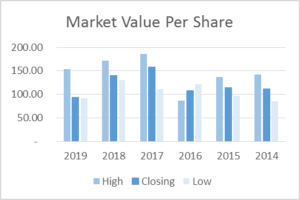
Earing per share increased to 43% from Rs.11.65 per share to Rs.16.66 per share. The gearing ratio of the company increased from 20.77% to 27.13% mainly due to the unrealized loss of Rs.13.573 billion on equity investment as a result of decrease in the market value of share of the listed companies and decrease in the fair value of share of the unlisted companies.
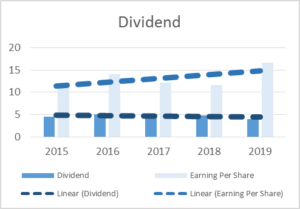
Management of the Company believes share value of these investments will improve as soon as economic indicators of the country improve.
Recommendations:
We recommend buying this stock. As the Nishat Mills is belongs to textile industry in Pakistan and mainly business comes from local and export both. After the unexpected disease “Covid-19”, this has disturbed the global economy. The lowest share price of Nishat mills is reported on 26th of March 2020 after the lock down due to Covid-19. By the time, stock price revived and stand on Rs.70.64 on 21st of May 2020. Before that, the price was moving between Rs.98 to Rs.105. In May 2020, it does seem the trade volume of this is very low.
Generally people sale their stock in Ramadan to manage their cash liquidity but in May 2020 it seems that the trade volume is low as compared to the trend. As the situation is controlling itself by the time and people develops alternate ways for their business and many garment companies use virtual outlets, so the demand of yarn and other Nishat’s operations are required to operate the most.
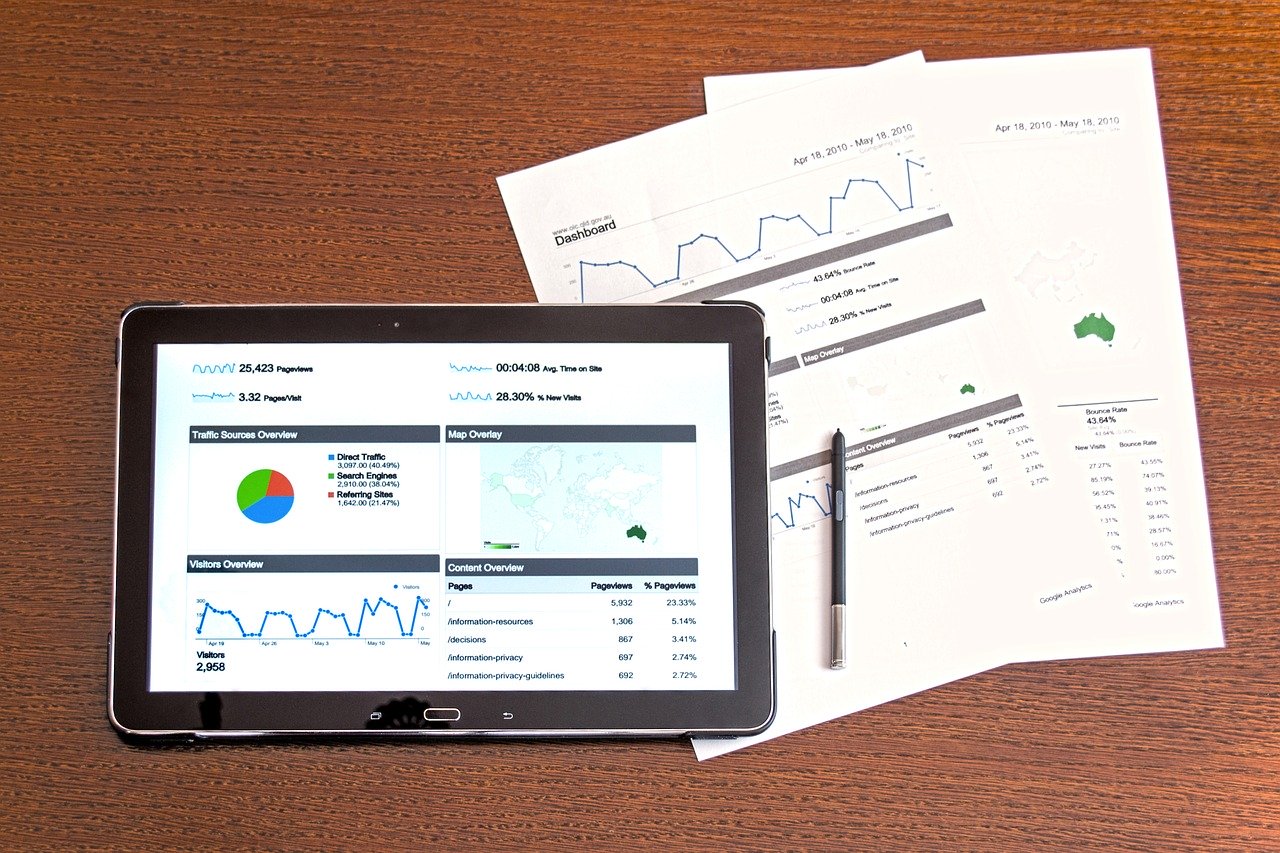
One thought on “The Investment Decision Process Top-Down, Three-Step Approach”